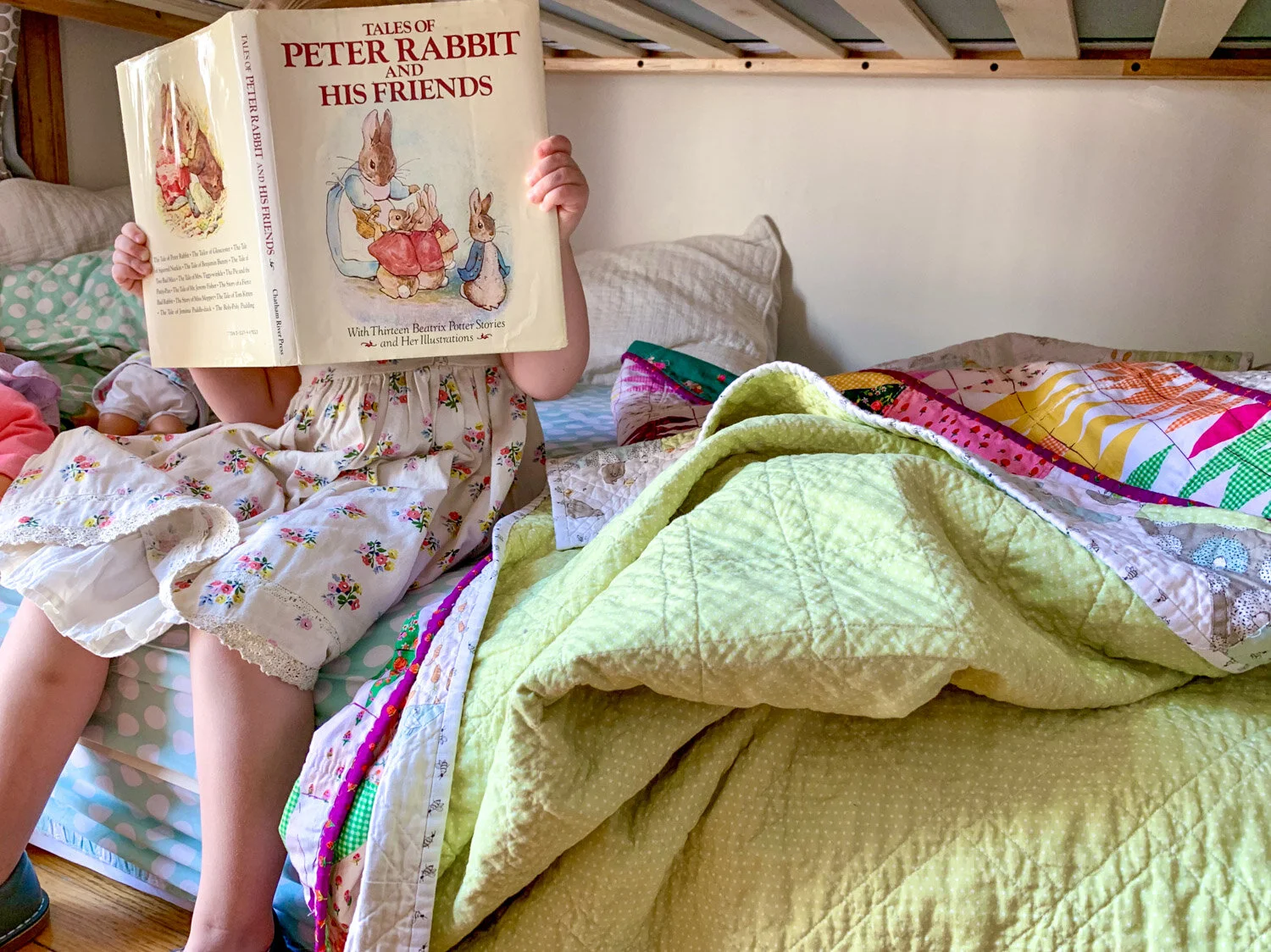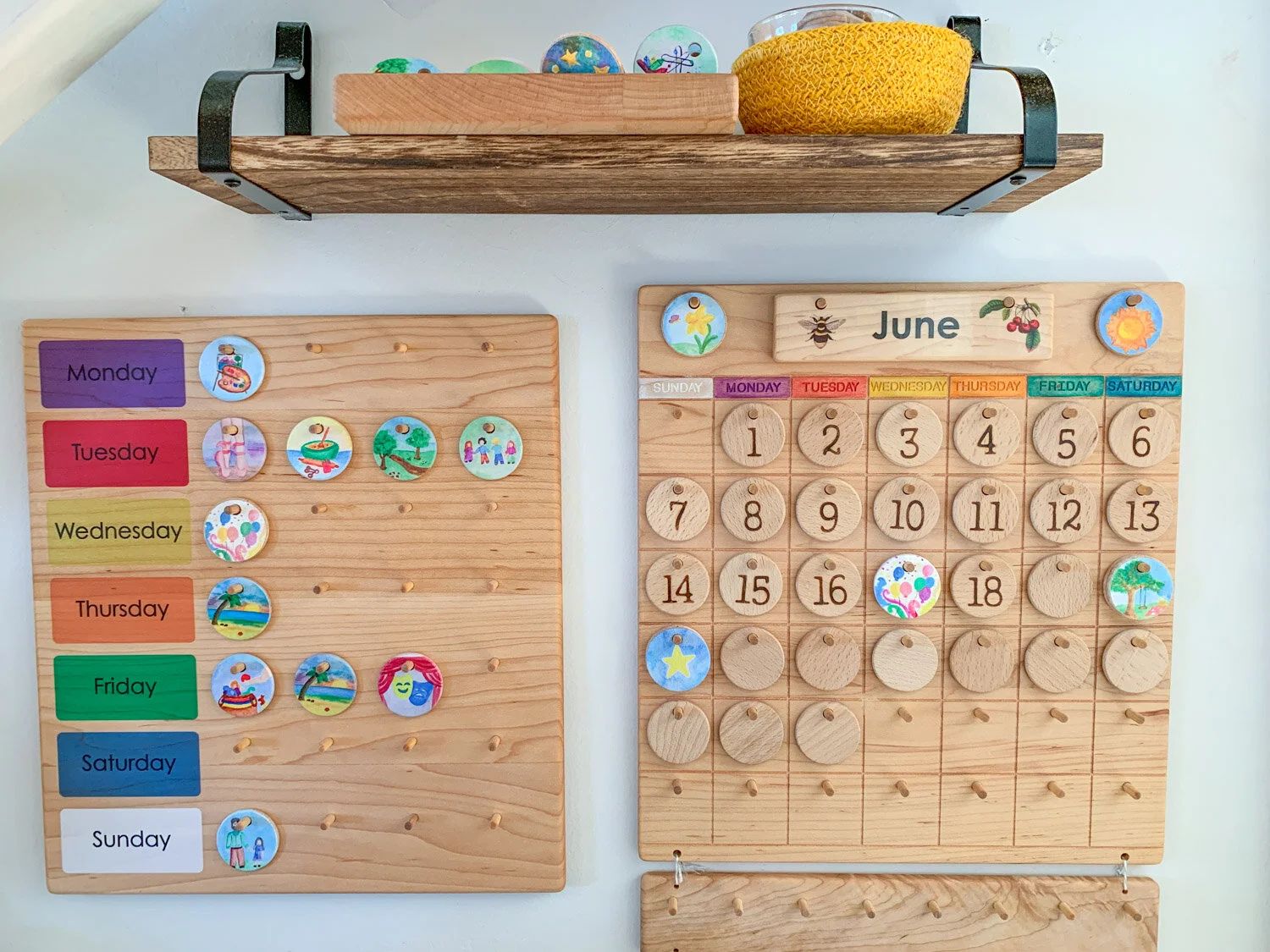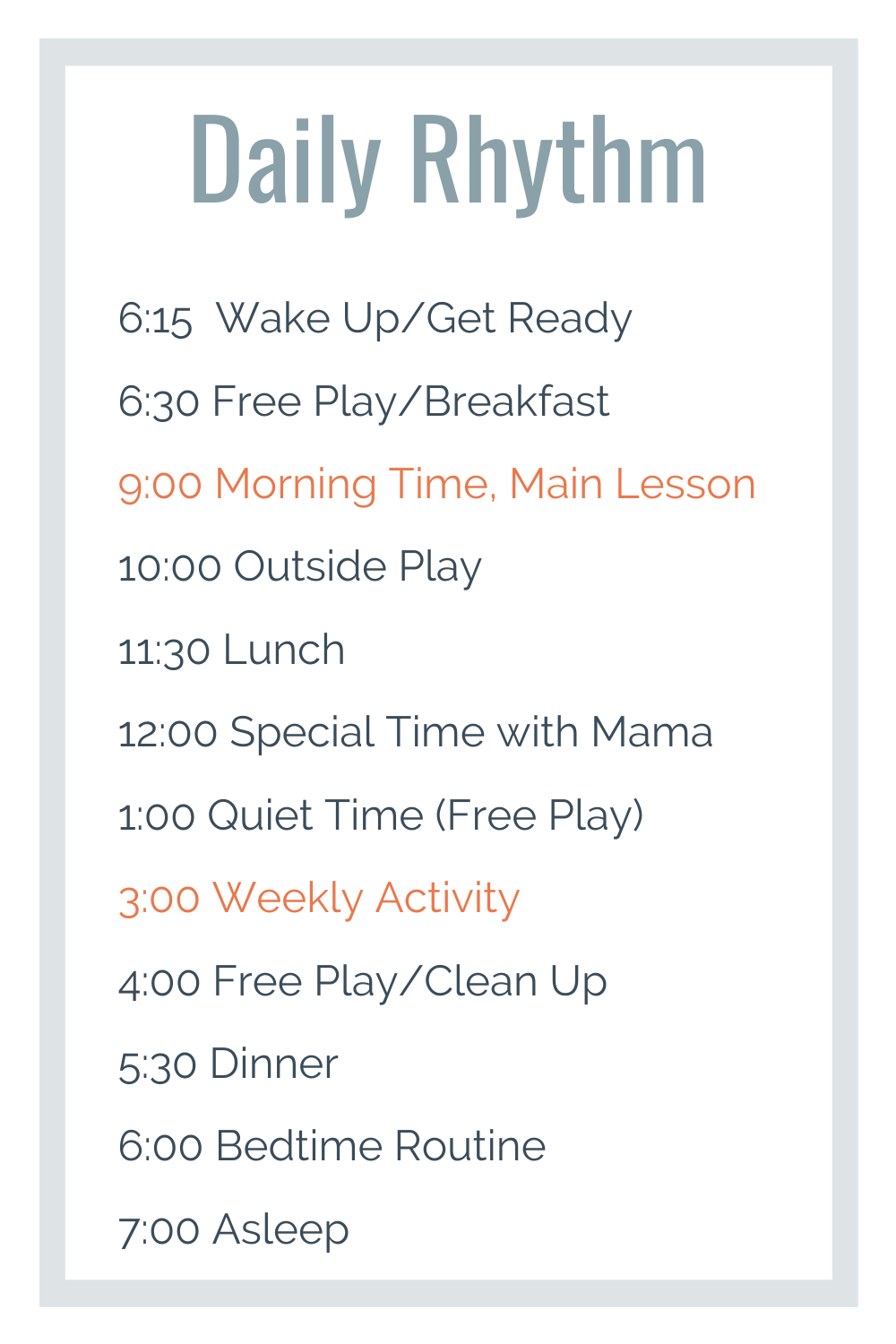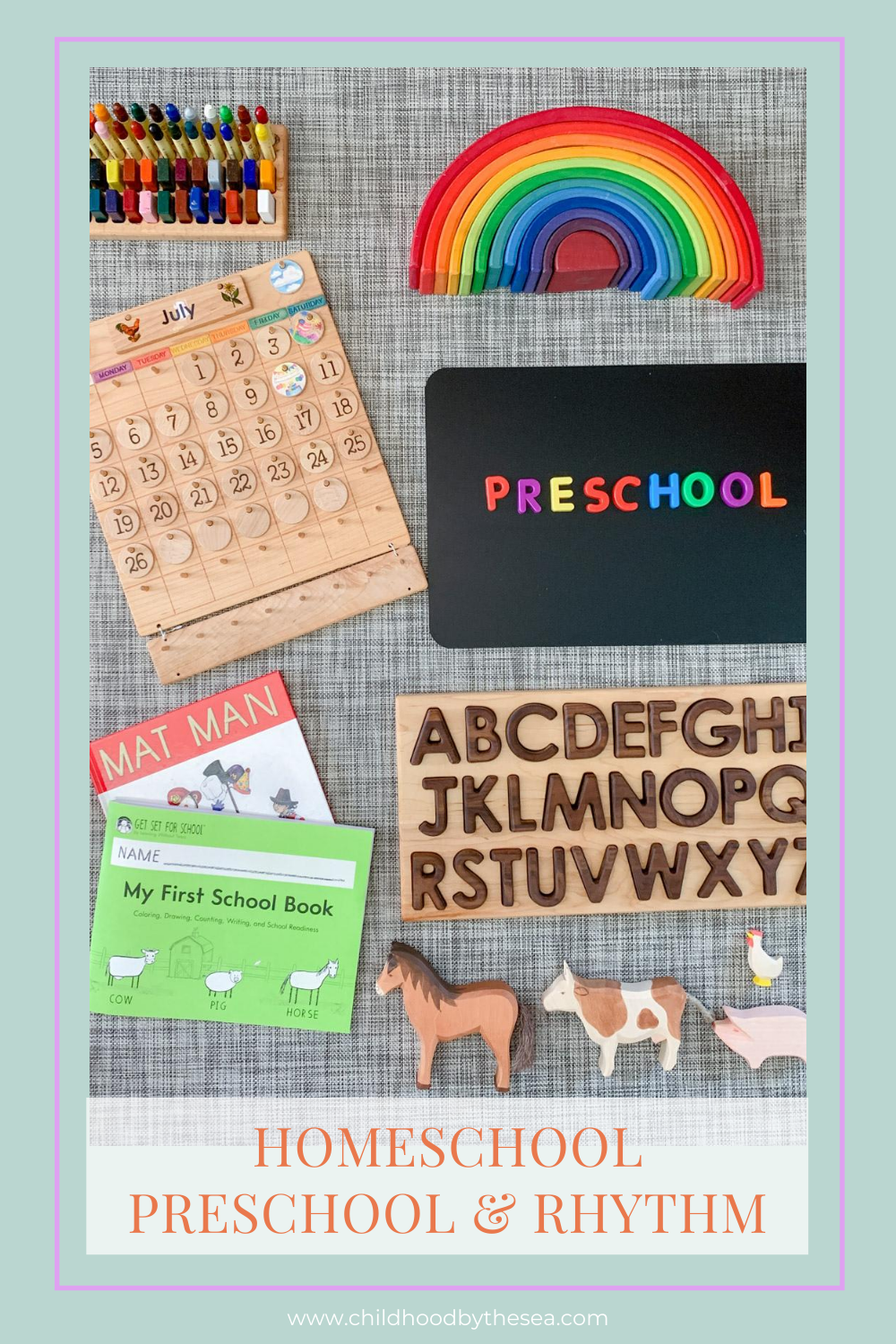preschool + rhythm
Let's talk preschool. When my oldest son reached preschool age, I felt already behind in our current area. In the Boston suburbs, it is very common for children to start preschool around 2-3, and many families look for academic preschools. There is a lot of pressure to start academics and a lot of "keeping up with the Jones'" mentality. Even though my background is in early childhood education, I found myself second-guessing our choices to hold off on preschool.
Fast forward three years - our middle, Miss C2, will be four in the fall and is now "preschool age." We will not be doing anything official in terms of homeschooling for her. Instead, she will join our morning time and lessons. Or not — her choice.
Instead of focusing on a curriculum or specific learning targets, we will continue to focus on our various family rhythms. Waldorf Education does not believe in formal academics before age 7. Instead, the focus is on fostering imaginative play and family rhythm. Rhythm helps children feel safe and therefore connect and learn better.
The thee primary rhythms for the early childhood years are:
Seasonal - thinking about the seasons and associated activities, holidays, celebrations.
Weekly - thinking about how each week flows and specific, recurring activities.
Daily - the flow to our day
Waldorf assigns a color to each day to help children with weekly rhythms. We have been using the color days since our oldest was about two, and it has been incredibly helpful. It's much easier for children to associate an activity with a color day than the actual names of the days.
Weekly Rhythm
This past year, our weekly rhythm looked like:
Monday: Bake
Tuesday: Art
Wednesday: Hike
Thursday: Games
Friday: Chores
Saturday: Free Day
Sunday: Dada Activity
These are the activities that worked for our family last year. You can pick any activities that you and your family would enjoy. Need ideas for daily activities? Let’s brainstorm over on Instagram.
Now that it's summertime, our weekly rhythm revolves around the tides and the weather. We spend a great deal of time outside and fill in our non-beach days with our weekly activities as needed.
Daily Rhythm
While we do not follow a precise schedule, the baby's naps and other anchor points like meals/bedtime lend to a relatively consistent daily rhythm.
You'll notice the kids (6 and 3.5) are spending the majority of their day playing. We spend about an hour in the morning doing morning time and our main lesson (unit study). The kids are listening to books, playing games, doing art, and having fun - we all enjoy this time.
2020-2021 School Year
This upcoming school year, we will continue with the same daily rhythm. Our weekly rhythm is still up in the air to some degree. Miss C2 will join in on C1's Oak Meadow curriculum as she wants. She is always welcome to join in or do her own thing. Usually, she comes and goes.
The one curriculum we *might* use with preschool-age Miss C2 is Handwriting Without Tears. HWT is a developmentally appropriate, multisensory approach to teaching handwriting developed by OTs. Handwriting is an area where we veer off the Waldorf framework. I am big on teaching handwriting and correct letter formation early. I like to start teaching handwriting when a child is showing interest in writing their name or trying to copy letters/words. It is much easier to teach proper letter formation from the beginning. Correct letter formation is important because the improper formation of letters can lead to hand fatigue and illegibility well into adulthood (just ask my husband!)
So, here is what homeschooling preschool will look like for us and our soon to be 4-year-old:
Play
Books
Outside Time
Morning Time
Thematic Units
Handwriting (maybe)
Will I work on teaching ABCs and 123s, etc.? Not really. We have puzzles, games, books, and toys that naturally tie in things like learning the alphabet, colors, shapes, numbers, and counting. I'm confident that Miss C2 will pick up the necessary pre-literacy and pre-math skills she will need before she starts more formal learning around 6-7, so I don't feel a need to push anything she isn't ready for or interested in yet. I would rather Miss C2 spend time playing, spend time with her brothers, and spend time in nature.
Are You On Pinterest?
If you enjoyed this post I’d love for you to share it, thanks!







